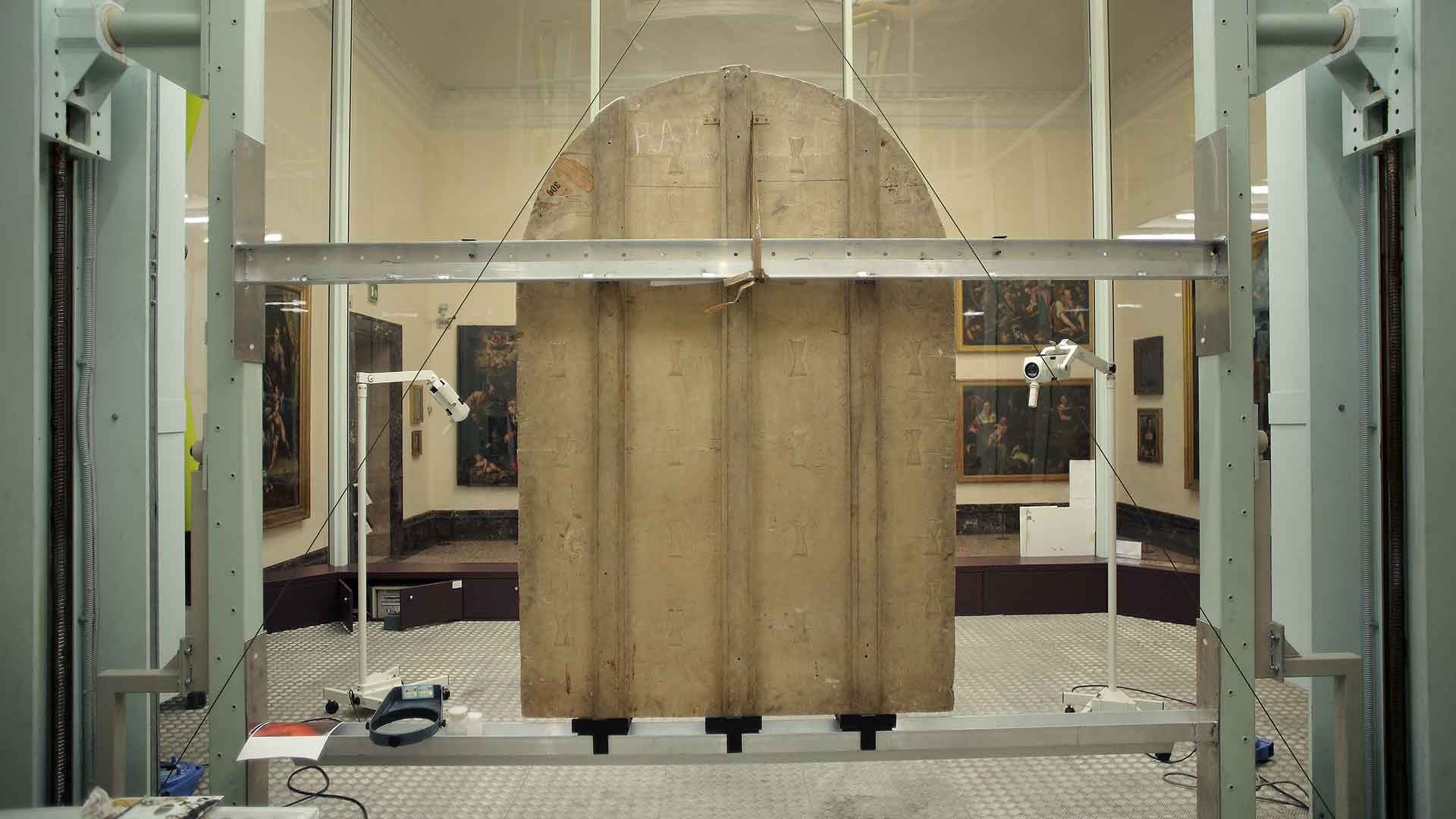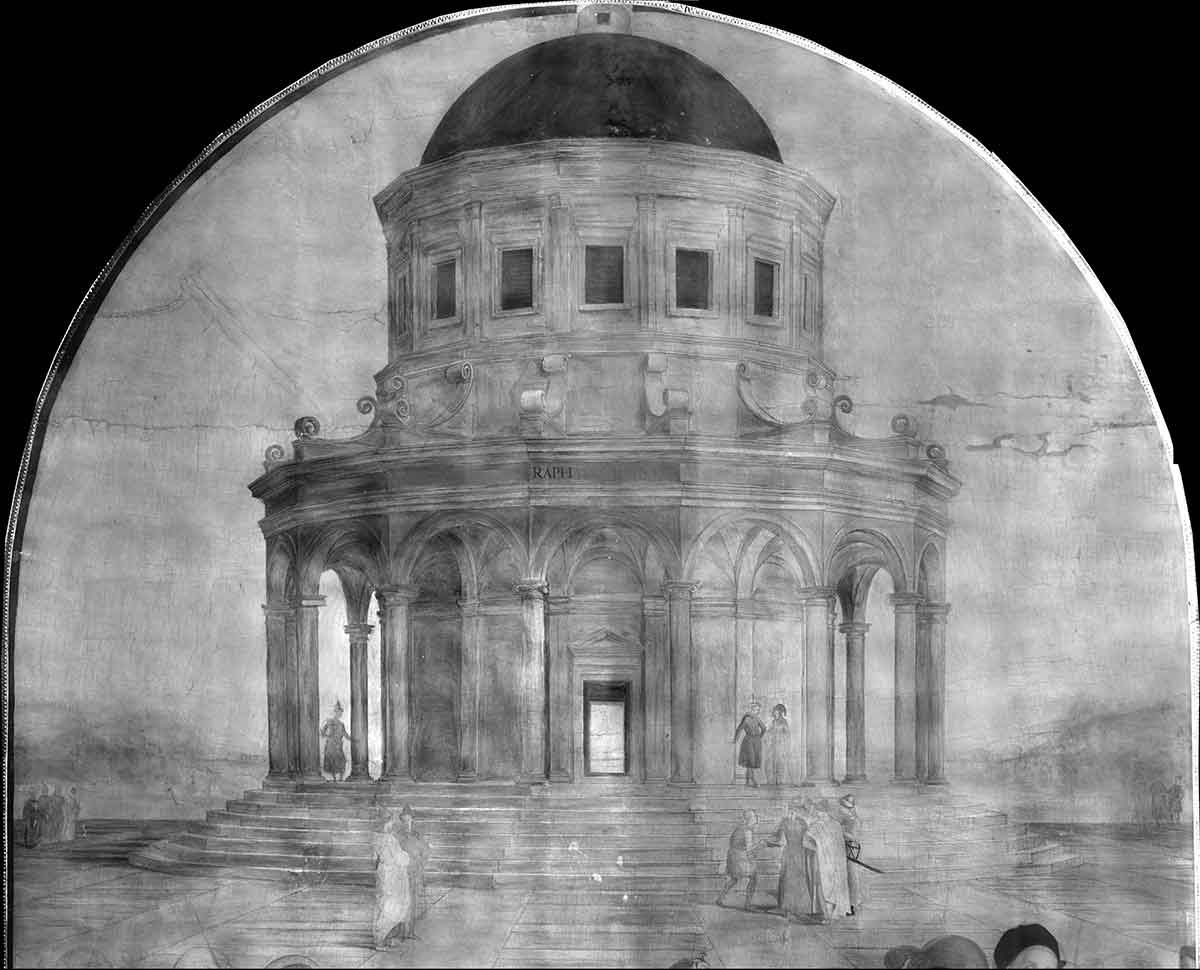
RESTORING THE MARRIAGE
OF THE VIRGIN

The altarpiece, one of the most famous in the Pinacoteca di Brera, is signed Raphael Urbinas XDIIII.
Painted for the Franciscan church in Città di Castello, the altarpiece left Umbria forever when the citizens gave it to Giuseppe Lechi, a general from Brescia in the ‘liberating’ army. Purchased by Eugène de Beauharnais in the early 19th century, it was assigned to the Pinacoteca di Brera by viceroy’s decree.

Technique
The painting, which measures 173.5 x 120.7 cm, consists of seven planks of wood from a deciduous tree arranged horizontally and held together by three cross-pieces and twenty-three bowties coated with a layer of lead white and varnish.
The planks are covered with a primer layer of plaster and glue onto which the artist transferred the design from a preparatory cartoon now lost. Observing the painting under infrared light, one can detect an extremely detailed preparatory drawing outlined in black ink, with a brush for the figures and with incisions for the architecture.


Raphael covered the drawing with a light, warm colour base using lead white, lead yellow and glass dust and tin, which lessens the primer layer’s capacity for absorption and makes it easier to apply oil paint in successive fine layers or velature.
Raphael’s technique is extremely sophisticated. He proceeds with fine velature in the flesh areas, with broad, thick brush strokes in the drapery and architecture and with fine gold and silver embroidery, to embellish the figures’ garments.

Previous Restoration and Overall Condition
The altarpiece has been restored on several occasions over time. The first attempt, possibly in the 18th century, being known only from a description supplied by the painter and restorer Guido Molteni,who made good the support and performed a balanced cleaning operation in 1858.
100 years later, after a visitor took a hammer to the picture, Mauro Pelliccioli intervened once again, puttying and retouching the damage caused by the act of vandalism.
150 years after Molteni’s restoration, the image of the Marriage was suffering from the excessive ageing and deterioration of the materials he had used. Restoration was entrusted this time around to the Pinacoteca’s own in-house restorers.



Restoration
Restoration took place from January 2008 to March 2009, to tie in with the celebrations held to mark the Pinacoteca di Brera’s bicentenary.
It was preceded by a campaign of in-depth diagnostic analysis conducted in partnership with leading research institutes, a process required to identify the materials used in the painting, the technique adopted by the artist and all previous restoration attempts.






The restoration set out to recover the artist’s harmonious palette, which had been falsified by the various layers of deteriorated varnish, and to discover any flaws in the paint film’s adherence to the support.
Deteriorated restoration materials were removed gradually and selectively, taking into consideration the deterioration of certain pigments with the aim of maintaining an overall balance between the various shades and hues.
After cleaning had been completed, the paint film appeared to be, generally, in good conditions. The most conspicuous paint drops were a result of the act of vandalism. Retouching and making good using an identifiable hatching technique with reversible watercolours and varnish was rigorously restricted to paint drops and abrasions. The final varnishing restored the altarpiece’s full legibility.
The painting was then returned to its neoclassical frame, which had also been restored for the occasion.

